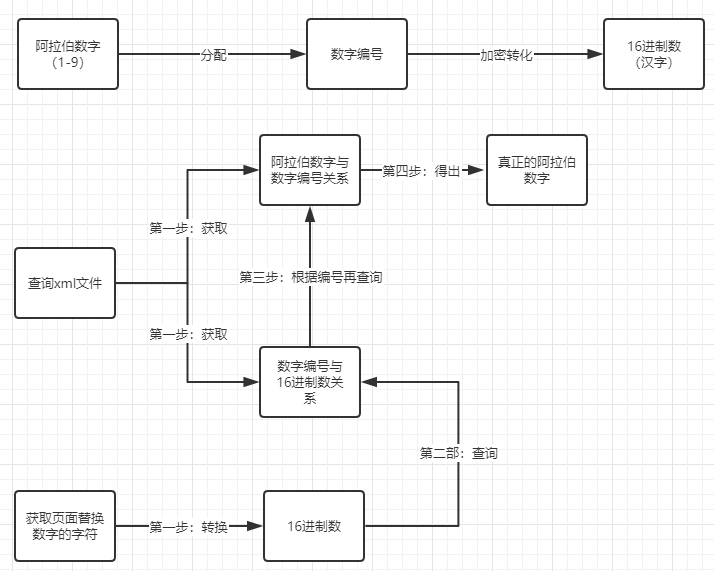一、基础首页爬取
def crawler(): # 设置cookie cookie = '''cisession=19dfd70a27ec0e t_f805f7762a9a237a0deac37015e9f6d9=1483926368''' header = { 'User-Agent': 'Mozilla/5.0 (Windows NT 6.1; WOW64) AppleWebKit/537.36 (KHTML, like Gecko) Chrome/53.0.2785.143 Safari/537.36', 'Connection': 'keep-alive', 'accept': 'text/html,application/xhtml+xml,application/xml;q=0.9,image/webp,*/*;q=0.8', 'Cookie': cookie} # 设置请求头,模仿浏览器访问 # headers = { # 'User-Agent': 'Mozilla/5.0 (Windows NT 10.0; Win64; x64) AppleWebKit/537.36 (KHTML, like Gecko) Chrome/80.0.3987.149 Safari/537.36' # } headers = { 'User-Agent': 'Mozilla/5.0 (Windows NT 10.0; Win64; x64) AppleWebKit/537.36 (KHTML, like Gecko) Chrome/80.0.3987.149 Safari/537.36', 'Referer': 'https://sg.58.com/ershouche/?spm=242729801700.bd_vid&utm_source=sem-esc-baidu-pc'} # 设置想要爬取的网页链接 url = 'https://sg.58.com/ershouche/?spm=242729801700.bd_vid&utm_source=sem-esc-baidu-pc' response = requests.get(url, headers=headers) return response
二、寻找获取加密方法
2.1页面分析:
如下图页面数据展示可以看出,该数字数据被加密成特定的其他字符表示,因此我们先找到起加密方式

通过F12查看该前端样式发现,取消勾选font-family页面前后展示数据对比:


通过Ctrl+F搜索fontSecret可以看到如下内容,就是该页面的加密方式,并且经过测试发现该页面每刷新一次加密方式就会发生变化,因此我们需要通过爬虫获取每次刷新后的新加密方法:

2.2编写代码:
def parse_one_page(html): #使用正则表达式获取每次加密的新加密内容 pattern = re.compile( '<style>.*?(AAEAAAAO.*?wAP.*?).*?</style>', re.S) items = re.findall(pattern, html) str = "'" + items[0].strip() + "'" #根据此加密内容输出woff字体文件 bin_data = base64.decodebytes(str.encode()) with open('58font.woff', 'wb') as f: f.write(bin_data) # print('第' + str(page_num) + '次访问网页,字体文件保存成功!') # 获取字体文件,将其转换为xml文件 font = TTFont('58font.woff') font.saveXML('58font.xml')
三、解析xml文件
3.1文件内容
在xml文件中存在阿拉伯数字和与之对应的数字编码,需要注意的是在58同城页面升级后,这些数字编码并不捆绑阿拉伯数字,而是每次刷新进行随机分配,且(阿拉伯数字-1)=页面展示数字。
例如:在红框中id=5,其对应的uni002B反应给前台的显示数据是4,其他也是同理。

在下图中这是数字编码对应的16进制数,且数字编码也是每次刷新后重新分配给16进制数:

3.2设计代码思路
上半部分为粗略猜想的58加密方法,下半部分为解密思路

3.3代码
根据以上思路代码分为两块:
#建立列表 all_Price=[] #遍历所有汽车价格信息的列表将其转化为16进制数字后放入新的列表中 for price in price_list: str = price.get_text().replace(" ", "") Zu_list=[] #将每个汽车的价格拆封,然后一个个进行节码 #例如“¥.-起”拆分成“¥”、“.”、“-”、“起”然后逐个解码 for i in range(len(str)-1): decode_num = ord(str[i]) # 转成16进制 priceBaser64_Str = hex(decode_num)
#传入方法中 find_result=find_font(priceBaser64_Str) #合并解码后的阿拉伯数字得到真正的价格数字 Zu_list.append(find_result) #类型转化,放入新的列表中 all_Price.append("".join(Zu_list)) print(all_Price)
#传入16进制数 def find_font(priceBaser64_Str): # 利用xpath语法匹配xml文件内容,查询以glyph开头的编码对应的数字 font_data = etree.parse('./58font.xml') num_code = ['1','2','3','4','5','6','7','8','9','10'] # 建立字典存储每次,数字编码码对应的数字编号 # 样例格式:{'uni002B': 4, 'uni00A5': 5, 'uni65F6': 0, 'uni002D': 3, 'uni002F': 6, 'uni6298': 8, 'uni0025': 7, 'uni5143': 9, 'uni8D77': 1, 'uni4E07': 2} glyph_list ={} for number in num_code: glyph_reslut=font_data.xpath("//GlyphOrder//GlyphID[@id='{}']/@name".format(number))[0] glyph_list[glyph_reslut] = int(number)-1 # 除了随机的数字编码对应的16进制数外,还有“.”则固定对应0x2e # 依次循环查找xml文件里code对应的name if priceBaser64_Str == '0x2e': result='.' return result #num_list.append(result) #print(result) else: #使用xpath查询方式根据传进来的16进制数寻找对应的数字编号,再通过数字编号去遍历建立好的glyph_list找出对应的阿拉伯数字 result = font_data.xpath("//cmap_format_4//map[@code='{}']/@name".format(priceBaser64_Str))[0] # 循环字典的key,如果code对应的name与字典的key相同,则得到key对应的value for key in glyph_list.keys(): if result == key: familly_result = str(glyph_list[key]) return familly_result #print('已成功找到编码所对应的数字!')
四、最终写出xml文件保存
全部代码:
from fontTools.misc import etree from fontTools.ttLib import TTFont import base64 import xlsxwriter import re import requests from bs4 import BeautifulSoup #传入16进制数 def find_font(priceBaser64_Str): # 利用xpath语法匹配xml文件内容,查询以glyph开头的编码对应的数字 font_data = etree.parse('./58font.xml') num_code = ['1','2','3','4','5','6','7','8','9','10'] # 建立字典存储每次,数字编码码对应的数字编号 # 样例格式:{'uni8D77': '2', 'uni0025': '8', 'uni5143': '10', 'uni002B': '5', 'uni4E07': '3', 'uni6298': '9', 'uni00A5': '6', 'uni65F6': '1', '.notdef': '0', 'uni002F': '7', 'uni002D': '4'} glyph_list ={} for number in num_code: glyph_reslut=font_data.xpath("//GlyphOrder//GlyphID[@id='{}']/@name".format(number))[0] glyph_list[glyph_reslut] = int(number)-1 # 除了随机的数字编码对应的16进制数外,还有“.”则固定对应0x2e # 依次循环查找xml文件里code对应的name if priceBaser64_Str == '0x2e': result='.' return result #num_list.append(result) #print(result) else: #使用xpath查询方式根据传进来的16进制数寻找对应的数字编号,再通过数字编号去遍历建立好的glyph_list找出对应的阿拉伯数字 result = font_data.xpath("//cmap_format_4//map[@code='{}']/@name".format(priceBaser64_Str))[0] # 循环字典的key,如果code对应的name与字典的key相同,则得到key对应的value for key in glyph_list.keys(): if result == key: familly_result = str(glyph_list[key]) return familly_result #print('已成功找到编码所对应的数字!') def parse_one_page(html): #使用正则表达式获取每次加密的新加密内容 pattern = re.compile( '<style>.*?(AAEAAAAO.*?wAP.*?).*?</style>', re.S) items = re.findall(pattern, html) str = "'" + items[0].strip() + "'" #根据此加密内容输出woff字体文件 bin_data = base64.decodebytes(str.encode()) with open('58font.woff', 'wb') as f: f.write(bin_data) # print('第' + str(page_num) + '次访问网页,字体文件保存成功!') # 获取字体文件,将其转换为xml文件 font = TTFont('58font.woff') font.saveXML('58font.xml') # for item in items: # print(item) # yield { # 'index':items[0], # 'image':items[1]., # 'title':items[2], # } def crawler(): cookie = '''cisession=19dfd70a27ec0 t_f805f7762a9a237a0deac37015e9f6d9=1482722012,1483926313;Hm_lpvt_f805f7762a9a237a0deac37015e9f6d9=1483926368''' header = { 'User-Agent': 'Mozilla/5.0 (Windows NT 6.1; WOW64) AppleWebKit/537.36 (KHTML, like Gecko) Chrome/53.0.2785.143 Safari/537.36', 'Connection': 'keep-alive', 'accept': 'text/html,application/xhtml+xml,application/xml;q=0.9,image/webp,*/*;q=0.8', 'Cookie': cookie} # 设置请求头,模仿浏览器访问 # headers = { # 'User-Agent': 'Mozilla/5.0 (Windows NT 10.0; Win64; x64) AppleWebKit/537.36 (KHTML, like Gecko) Chrome/80.0.3987.149 Safari/537.36' # } headers = { 'User-Agent': 'Mozilla/5.0 (Windows NT 10.0; Win64; x64) AppleWebKit/537.36 (KHTML, like Gecko) Chrome/80.0.3987.149 Safari/537.36', 'Referer': 'https://sg.58.com/ershouche/?spm=242729801700.bd_vid&utm_source=sem-esc-baidu-pc'} # 设置想要爬取的网页链接 # url = 'https://nn.58.com/ershouche/?utm_source=market&spm=u-2d2yxv86y3v43nkddh1.BDPCPZ_BT&PGTID=0d100000-0034-d9f8-fe87-cbe415320007&ClickID=4' url = 'https://sg.58.com/ershouche/?spm=242729801700.bd_vid&utm_source=sem-esc-baidu-pc' response = requests.get(url, headers=headers) return response #爬虫数据转为xmlx文本写出 def writer_xml(response,sheetHeaders): #转化为文本格式 content = response.content soup = BeautifulSoup(content, 'lxml') # 创建名为58car.xlsx的excel文件 workbook = xlsxwriter.Workbook('19ar.xlxs') # 在excel文件中添加一个sheet工作表 worksheet = workbook.add_worksheet('韶关') # 获取所有的汽车名称,并存储在一个列表里 name_list = soup.find_all('span', attrs={'class': 'info_link'}) # 获取所有的汽车描述信息,并存储在一个列表里 describe_list = soup.find_all('div', attrs={'class': 'info_params'}) # 获取所有的汽车价格信息,并存储在一个列表里 price_list = soup.find_all('div', attrs={'class': 'info--price'}) #建立列表 all_Price=[] #遍历所有汽车价格信息的列表将其转化为16进制数字后放入新的列表中 for price in price_list: str = price.get_text().replace(" ", "") Zu_list=[] #将每个汽车的价格拆封,然后一个个进行节码 #例如“¥.-起”拆分成“¥”、“.”、“-”、“起”然后逐个节码 for i in range(len(str)-1): decode_num = ord(str[i]) # 转成16进制 priceBaser64_Str = hex(decode_num) find_result=find_font(priceBaser64_Str) #合并解码后的阿拉伯数字得到真正的价格数字 Zu_list.append(find_result) #类型转化,放入新的列表中 all_Price.append("".join(Zu_list)) print(all_Price) # 设置表头 for i in range(0,len(sheetHeaders)): worksheet.write(0, i, sheetHeaders[i]) # 通过len()方法得到汽车信息个数并进行遍历 for i in range(len(name_list)): # 在第i行第1列写入第i辆汽车的名称 worksheet.write(i + 1, 0, name_list[i].get_text().replace(" ", "")) # 在第i行第2列写入第i辆汽车的描述信息 worksheet.write(i + 1, 1, describe_list[i].get_text()) # 在第i行第3列写入第i辆汽车的价格信息 worksheet.write(i + 1, 2, all_Price[i]) # 数据写入完毕后将表格关闭 workbook.close() if __name__ == '__main__': sheetHeaders = ["汽车名称","描述信息","价格信息"] html = crawler() parse_one_page(html.text) writer_xml(html,sheetHeaders)
五、注意事项(可能出现的错误)
由于每次都需要重新导出xml文件并对其进行解析,因此建议使用者在对所有需要导出的文件命名时采用“随机码”或“时间”的方式对其进行命名,或则在运行前删除代码存放目录下所有之前导出的文件,否则重新运行会因为旧的xml无法被覆盖而导致解析出来的的是旧的对应关系,出现实际解码后的数据错误。